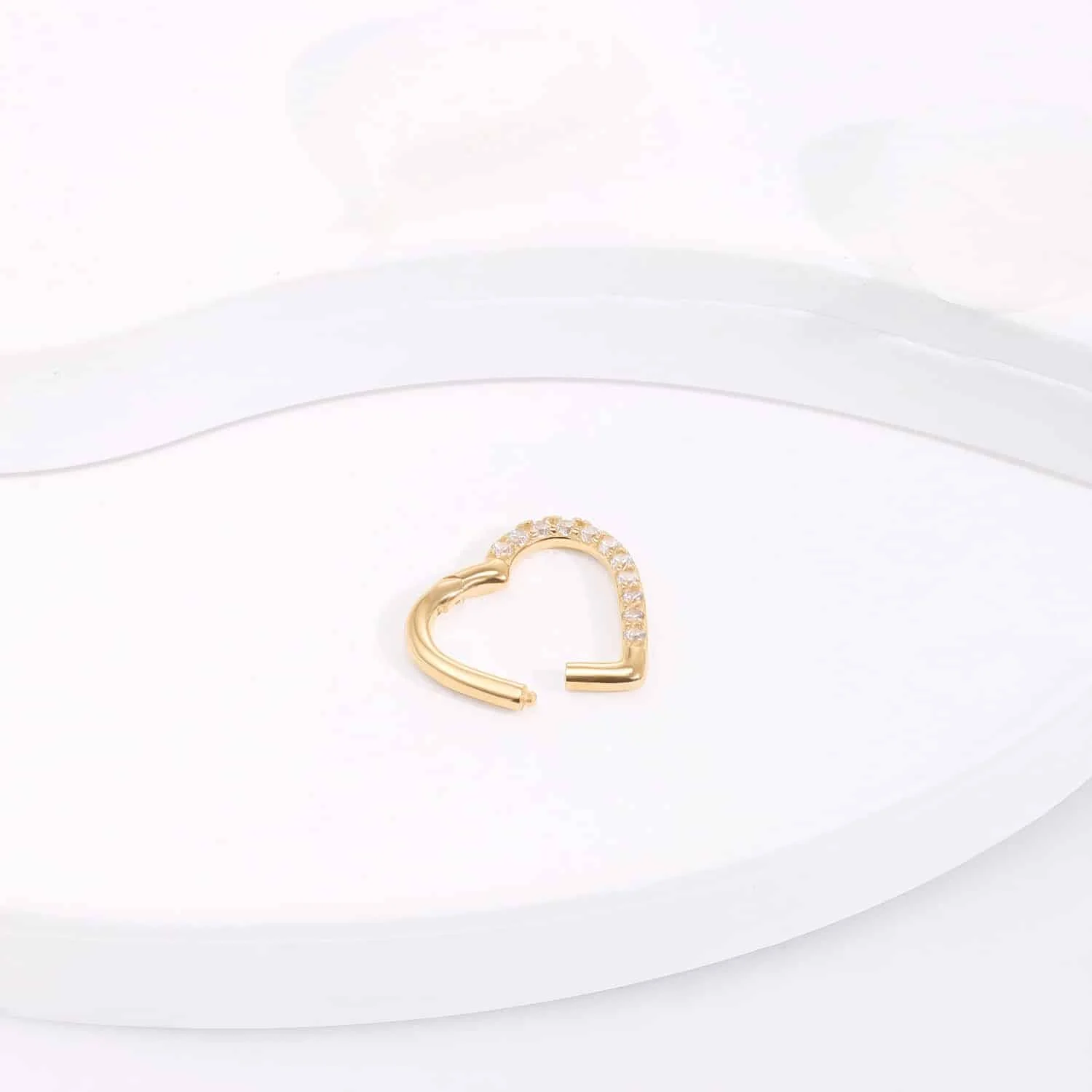E-Mail:wholesale@goldpiercingfactory.com WhatsApp:+14086905740


Facial piercings aren’t just a passing trend anymore. They’ve crossed over from underground subcultures into everyday fashion, even showing up in glossy magazines and fine jewelry campaigns. For wholesale buyers, that’s not just an interesting cultural shift—it’s a business signal. It says, “Hey, there’s room here for you to stock something that’s small, profitable, and in demand all year round.”
If you’re in retail, run an online store, or supply piercing studios, knowing the difference between a nostril stud and a Medusa labret is more than trivia. It helps you choose the right stock, avoid dead inventory, and maybe even upsell that hesitant first-timer into a 14K gold piece instead of the budget option.
Let’s be honest: they’re tiny. Tiny means low storage costs, easy shipping, and minimal breakage risk. A whole tray of high-value nose rings fits in a shoebox, and you can still carry it yourself without breaking a sweat.
Margins? Pretty sweet. One gram of 14K gold can be turned into a sleek, minimalist stud that sells for many times the metal’s spot price. Now imagine doing that across dozens of styles—threadless labrets, hinged segment rings, micro-pavé clusters—and you start to see why experienced wholesalers keep these categories stocked year-round.
Also, people don’t stop at one. Piercing customers are collectors at heart. They swap jewelry to match seasons, moods, or just because they saw something pretty on Instagram. That’s repeat sales without begging for them.
Selling facial jewelry is nothing like selling sunglasses. These pieces go through skin, and in some cases, they stay there 24/7. Comfort and safety aren’t just nice—they’re the baseline.
Most starter piercings use implant-grade titanium, surgical steel, or PTFE. But gold—good gold, not plated mystery metal—sits in its own league. At GPF, every 14K solid gold piece is nickel-free and comes with a monthly certificate of authenticity. Some buyers gloss over this paperwork until customs asks for it, then suddenly, it’s a lifesaver.
If you sell into the EU, you’ll bump into REACH rules. In the US, ASTM standards. Australia and Japan? They have their own nickel thresholds. It’s not thrilling reading, but failing an import inspection is a headache that can wipe out your profit margin. Work with a supplier who already knows the hoops you’ll have to jump through.
Knowing the styles means knowing where your money’s going.
The nostril piercing is as mainstream as ear studs now. Hoops, L-shaped studs, seamless rings—they all sell. The septum, once “punk only,” is now something you might see on a fashion editor at Paris Fashion Week. If you’re buying wholesale, carry both everyday basics and a few wildcards, like a 14K gold heart-shaped hinged segment with CZ sparkle. Those impulse buys add up.

Not for everyone, but the fans are loyal. Curved barbells in gold hit a sweet spot—visible but not over-the-top. I’ve seen studios where customers come in for a steel barbell and walk out with a gold one simply because it caught the light right.
Labrets, Monroe, Medusa—you name it. These piercings give room for creativity. A gold threadless stud with a single high-grade cubic zircon is versatile enough for daily wear, yet special enough to gift.
They’re rare, but if your market has a fashion-forward crowd, they’re worth stocking. Flat-back studs in floral or celestial designs tend to do well here.
It’s not just about what’s safe—it’s about what people want.
A boutique in Tokyo? They might want pavé CZ in gold. A busy piercing studio in Berlin? More likely to reorder titanium in bulk, but still keep a gold option on display.
If you sell in a competitive city, stocking the same catalog pieces as everyone else is a race to the bottom. This is where OEM comes in. GPF offers custom molds starting at 200 USD, with a 400-piece minimum. You can tweak a design, add a signature stone color, or even emboss your brand mark.
And if your order tops 1,000 USD, they refund the mold cost. Honestly, in jewelry manufacturing, that’s rare. Usually, tooling fees are sunk costs you never see again.
Facial jewelry may be small, but packaging matters. A plain plastic bag won’t cut it if you’re selling to a boutique. GPF offers free secure packing and can do custom branded boxes or cards. That “wow” moment when the box opens? That’s what turns one-time buyers into loyal customers.
As for shipping, you can get DHL or UPS delivery in 2–4 days to most countries. I’ve had rush orders land faster than domestic post in some places. And yes, if you’re dealing with seasonal sales or pre-holiday restocks, that speed is worth every cent.
You can sell a beautiful piece, but things happen—a stone loosens, a clasp fails. GPF’s lifetime warranty on all gold piercings covers defects, and their 7–20 day return window for quality issues is straightforward. For wholesale buyers, that’s one less customer service headache.
Stocking facial piercings is part strategy, part instinct. Know the types, pick the right materials, keep an eye on your market, and work with a supplier who makes your job easier.
And sometimes, yes, it’s about keeping that one conversation piece—the alien-face gold stud—that gets customers talking. You’d be surprised how often “I’ll just have a look” turns into a sale.
Q1. Which facial piercings sell best in bulk?
A: Nostril studs, septum rings, and labrets in 14K gold tend to move fastest, especially if they’re simple enough for daily wear but with a little sparkle.
Q2. How do I cut shipping costs without slowing delivery?
A: Order in consolidated batches, use lightweight custom packaging, and stick with suppliers who have proven DHL/UPS rates.
Q3. Do buyers really care about certification paperwork?
A: Absolutely. In some countries, you can’t even clear customs without it. Plus, it reassures customers that they’re getting the real deal.